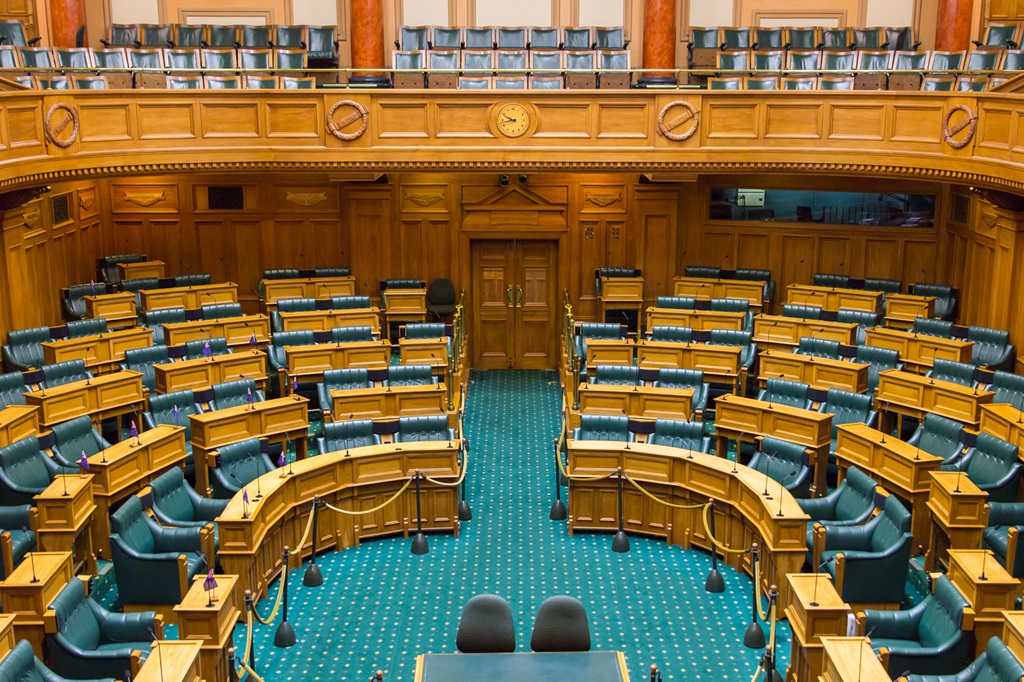
20 Dec How a Bill Becomes a Law Worksheet
The first step in the process of how a bill becomes law is drafting the actual text of the bill. This is done by members of Congress, either from the House of Representatives or the Senate. They may also receive assistance from outside groups or lobbyists when writing the bill.
The legislator who originally sponsors the bill is especially involved in deciding its final language and contents. When putting the bill together, they will consider input from colleagues, constituents in their home district, advocacy groups, and policy experts. If you want to learn more about the legislative process, you can discover how a bill becomes a law worksheet, which can help you understand what it takes to make a bill into law.
Introducing the Bill
Once the bill sponsor is happy with the draft of the legislation, they formally introduce it by submitting it to either the House of Representatives or the Senate, depending on which chamber they belong to. This introduction is called the “first reading” of the bill.
At this stage, the bill gets assigned to a committee for review. In the House, there are 20 standing committees, while in the Senate, there are 16, each with jurisdiction over different areas like agriculture, armed services, or transportation and infrastructure.
When introducing the bill, the sponsor will advocate for why it should become law and try to get other legislators to sign on in support of it right away. Building up a list of cosponsors who endorse the bill can help increase its chances of passing down the road.
It’s worth noting that at any time in the process, companion legislation can also be introduced in the opposite chamber from the one the bill started. This is when a representative introduces a companion bill to a senator’s bill in the House or vice versa. The language is largely the same, but it allows the legislative process to move forward in both chambers concurrently rather than waiting for one to approve it first.
Committee Review
Once introduced to Congress, each bill then gets referred to a committee for review. Which committee it goes to depends on the bill’s topic area. For example, a business-related bill would go to the Financial Services Committee, while a health reform bill would go to the Energy & Commerce Committee.
When the bill arrives at the committee, the chair decides whether to schedule it for consideration. Unfortunately, over 11,000 bills get introduced in a typical year, often more than the committees have time for!
If the chair decides to move forward, they will call a hearing where outside experts and anyone with a stake in the bill can go before the committee to give testimony and input. Interest groups often testify at this stage to voice support or opposition to the bill on behalf of their constituencies.
After gathering all the relevant information through hearings and research into the bill’s costs, benefits and other impacts, the committee members will meet to go through the bill line-by-line. This “markup” session is where they can make changes to the language of the bill through amendments and debate the merits of the proposed legislation.
Finally, at the conclusion of their review, the committee holds a vote: should they report the bill favorably to the whole chamber, unfavorably, or make no recommendation at all? If a majority votes favorably, it will move ahead to be voted on by the full House or Senate.
Debate by the Full Chamber

Once a bill makes it successfully through a committee, it heads next to be debated and voted on by the full chamber, either the 435-member House of Representatives or 100-member Senate.
For particularly significant or controversial bills, this tends to spur a lively exchange of views between legislators on both sides of the aisle. They will take the floor to argue why the bill should or shouldn’t be approved, propose any last-minute changes, highlight the pros and cons of the policy for their constituents back home, and attempt to sway any undecided colleagues.
Amendments can still be introduced on the floor and voted on, though they need approval from a majority to be incorporated. So, there may be a period of back-and-forth refinement to the bill’s language as it’s debated.
Finally, it comes time for the actual vote. In order for the bill to clear this legislative hurdle and proceed to the other chamber, it needs support from at least 50% of members plus one – so 218 votes out of 435 Representatives, or 51 out of 100 Senators.
Other Chamber
Here is where things often slow down…Once a bill gets through one congressional chamber successfully, passing that initial vote, it must make the full round of committees, testimony, and floor debates in the other chamber before heading to the president.
For example, if a House bill manages to get Senate approval too, it would then skip conference and go straight to the White House for the president’s signature.
On the flip side, let’s imagine a bill introduced in the Senate gets passed and sent over to the House. It has to start all over again, going through the whole legislative process – committee consideration, testimony and amendments, chamber debate, and voting – just as it did on the Senate side initially.
The reality is each chamber has its own way of doing things regarding the pace of hearings, partisan leadership agendas, and floor debate rules. So there’s no guarantee the other half of Congress will move smoothly or swiftly to get on board with what the first chamber passed.
Conference Committee
Often the Senate and House pass slightly different versions of the same bill. Maybe the House wants to authorize more funding than the Senate, or the Senate includes some last-minute amendments that the House never considered. When the second chamber alters a bill at all, it gets sent back over to the first chamber for approval of those changes.
If the original chamber rejects the revisions and no compromise can be reached informally, that’s when it heads to a conference committee as the next step.
A temporary, ad hoc conference committee is appointed to determine the differences. An equal number of Senators and Representatives from relevant committees sit at the conference. They meet to negotiate, debate and ultimately amalgamate the House and Senate proposals into one unified bill that both chambers can agree on.
Sometimes conference discussions happen quickly, while other times, major disputes cause weeks or months of back-and-forth. Healthcare and spending bills tend to require lengthy conference negotiations to reach a consensus.
Once the conference committee agrees on the bill’s final contents and language, they draft a written conference report outlining the compromises made. This report and unified bill then go back to the full House and Senate for one final vote in each chamber.
Passage by Both Chambers…Again
Because the bill may look different coming out of the conference than the original version they voted on, both the House and Senate must take one more roll call vote on this final unified “conference report bill.”
So essentially, the revised legislation has to make another full round through both chambers!
They cannot amend the bill again at this last stage – it’s a simple yes or no, up-or-down vote. The vote tally required is the same as before too: 50% plus one member. This gives Congress one more chance to halt the bill’s progress or push it through to law.
If majorities in both bodies give the thumbs up, the tedious bicameral process is at last complete! The bill finally cleared all the hurdles to passage within Congress itself. Never thought it would end, huh? But wait, there’s one last stop to make…
The President’s Desk
Once both the House and Senate pass identical legislation, the enrolled bill gets printed on parchment paper in the exact form it will become law. This official enrolled copy heads straight to President of the United States for approval.
Technically as soon as it arrives on the president’s desk, they have 10 days (not counting Sundays) to take action on it. Otherwise, it automatically becomes law even without the president’s signature! This is pretty rare though.
After the long journey it took to get to this point, the president then has a few options:
Sign the bill into law – Agreeing with Congress, the president can promptly sign his or her name on it approving the measure to officially enact it as a law.
Veto the bill – Disagreeing with the policy, the president can reject the bill altogether and “veto” it back to Congress
Pocket veto – If Congress adjourns before that 10-day timeline expires, the president can indirectly veto the bill by simply taking no action and letting it die
Now if the president vetoes the bill, Congress does have a chance to override that veto. But it’s a very steep climb. A successful veto override requires a 2/3 supermajority vote in favor in both the House and Senate.
If Congress fails to override the veto, the bill dies and does not become law. Their only option is to start all over again back at step one, drafting and introducing brand-new legislation.
However, if the president does eventually sign on the dotted line – or Congress overrides his rejection – then the bill officially becomes enforceable as a law!
It’s time for champagne after all that work, right? Not so fast…there’s still a phase of promulgation before it impacts daily life across the country.
Promulgation of New Law

Once the president approves the bill, there’s still a bit more work to do before it can take widespread effect as an officially enforceable law. Promulgation fills in that gap. This vital last step makes sure the public, courts, Congress, and executive agencies are all notified about the statute’s exact provisions.
First, the original enrolled bill signed by the president gets assigned an official number by the Office of the Federal Register.
Next, the text of the newly enacted law is printed on the pages of the Federal Register and various other government publications to go on public record. This is essentially the “promulgation” that gives formal notice to society about what’s soon to be enforced.
Separately from increasing public transparency, the law itself also often specifies a specific date in the future for when each section or provision shall fully enter into force. For complicated bills impacting private sector business practices, delayed enactment dates give companies ample time to adjust their operations accordingly.
Lastly, the Statutes at Large publication prints every public law passed in a given period along with its legislative history. This serves as evidence of Congress’s intent when they crafted and revised the bill’s language at each step of the process before landing on the final text.
Whew, made it at last! See why it takes a good long while for even urgent legislation to navigate this extensive path to enactment?
FAQs
Q. How long does it take for a bill to become law?
On average, it takes a bill over 290 days, or 10 months, to travel the full gauntlet from initial introduction to the presidential signature being enacted into law. However, it’s possible for high-priority bills addressing urgent national concerns to get fast-tracked through Congress more rapidly when necessary.
Q. Can the House or Senate pass a bill by themselves?
Nope, both chambers must independently pass the identical text of any bill before it can proceed to the White House for the president’s approval. So, neither the House nor Senate acting alone can make something legally binding or enforceable as a national law. Their bilateral consensus is required.
Q. What happens if the House and Senate pass different versions of the same bill?
When the chambers approve slightly different language, legislation gets bounced back and forth in attempts to reconcile the discrepancies through amendment votes or by convening a special “conference committee” to hammer out an agreed deal.
Q. Does every bill introduced get voted on eventually?
Unfortunately no. Tens of thousands of bills compete for limited time and attention every legislative session. The congressional committee review serves as an initial filter for determining which proposals actually make it to the floor for wider consideration and voting.
Q. Can the public or interest groups influence how members of Congress vote during the process?
Yes, direct input from constituents back in their home states carries a lot of weight with legislators. Phone calls, letters, petitions, and local news coverage can shape their stance. Lobbyists and political action committees also apply outside pressure through donations, grassroots campaigns, and issue ads. So public opinion definitely plays a role!
The Long Haul to Passage
And there you have it – the step-by-step process mapping out exactly how an idea for a bill gets turned into enforceable law in the United States! It’s designed purposefully to make legislation difficult to enact, ensuring some degree of bipartisan compromise has to be reached.
This means even the most common sense changes often require persistence over multiple congressional sessions to build momentum. Major reforms routinely take many years of milemarkers – or roadblocks! – along the way before ultimately seeing the passage.
Of course, there are rare exceptions when truly urgent matters like emergency disaster relief funding get ushered swiftly through the procedural maze.
But for any law impacting healthcare, taxes, military policy, immigration, transportation, and infrastructure, or the environment – expect a lengthy journey filled with stops and starts before reaching the finish line! Our founding fathers wanted change by consensus, not impulse. And despite its inefficiencies and frustrations, many argue the congressional obstacle course still gets it right more often than not in the long haul!


No Comments